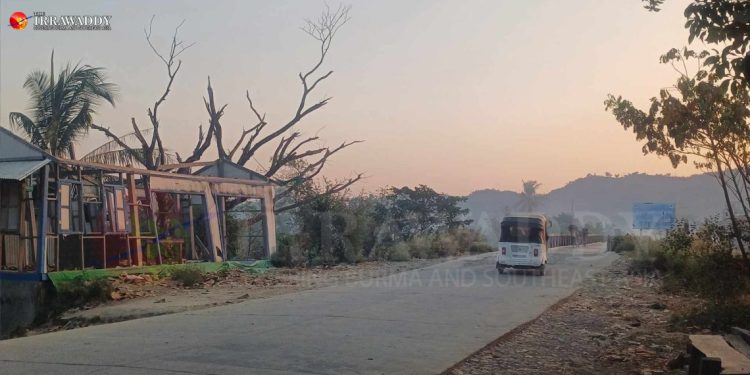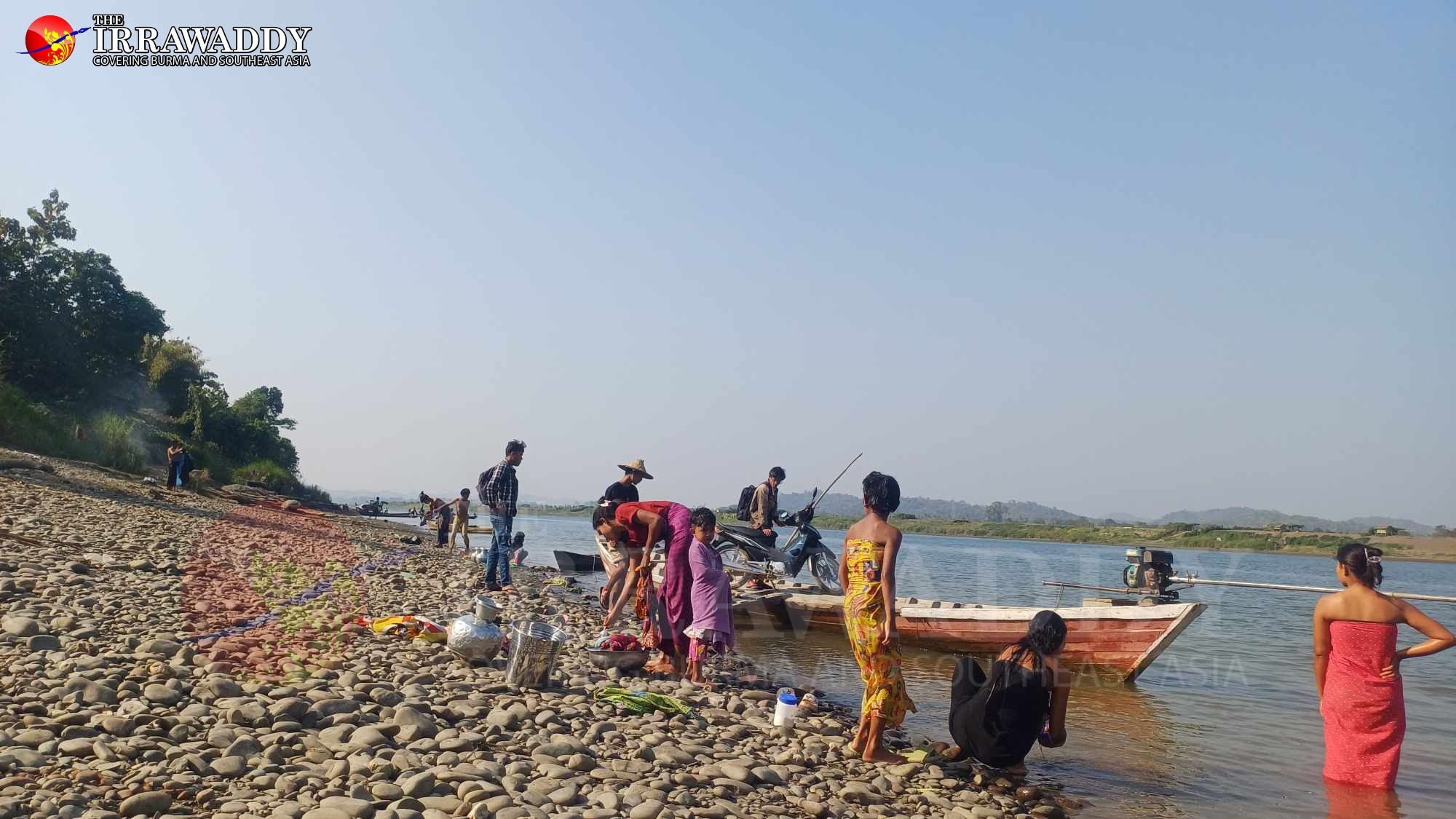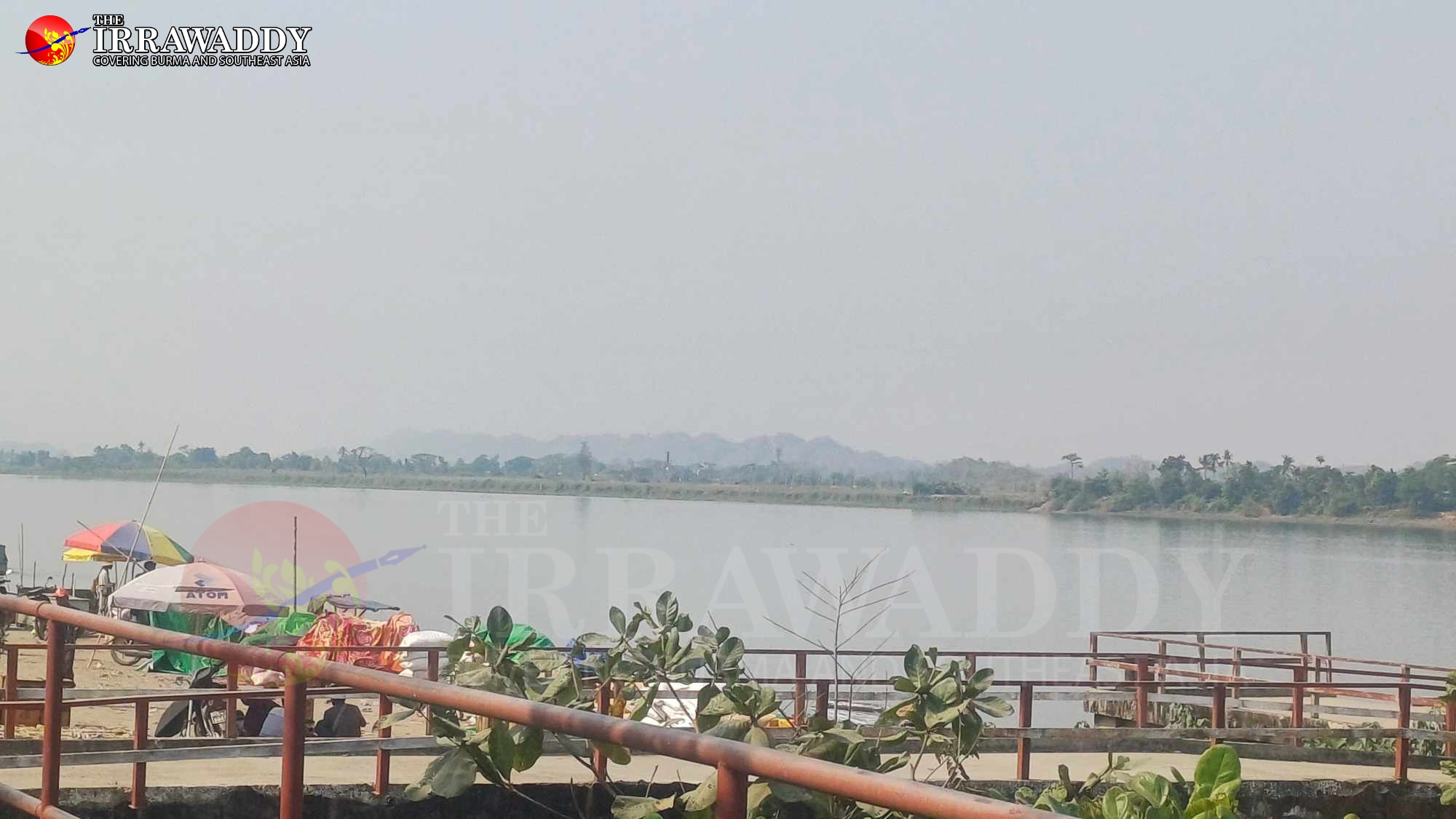
The Arakan Army (AA) has captured several towns in northern Rakhine State since launching an offensive against the regime in western Myanmar in November last year. Among the towns it has seized are Ponnagyun and Rathedaung bordering the state capital of Sittwe, the seat of junta administration in Rakhine.
The AA has also been making progress in Buthidaung and Maungdaw townships as it advances south down the coast to seize nearby Sittwe and take control of the entire state.
As the fighting rages, most residents in northern Rakhine are sheltering in villages, where they face serious food shortages and other hardships. The Irrawaddy recently interviewed a resident about the hardships and security situation of displaced people in northern Rakhine.
What is the current situation across Rakhine?
Communications are down in Rathedaung (just north of Sittwe). There was a heavy bombing raid a few days ago. Rathedaung has been deserted since January. The AA is still clearing the area (after seizing the town on Sunday).
Guns have fallen silent in Ponnagyun (30 km northeast of Sittwe) since the AA seized it. There have only been a few bombing raids there, so it’s fair to say the AA has control over the town. But residents of Ponnagyun town and surrounding villages still can’t return home. The AA is clearing mines and has told locals to delay their return for safety reasons.
The regime bombed Mrauk-U again on March 17. The town has been ruined. Residents could not take their belongings when they fled the fighting. The AA has barred residents from entering the town, reportedly to prevent theft.

What is the situation in Sittwe?
Both government employees and civilians have fled the town as the (AA’s) offensive in northern Rakhine advances.
Not many people are left in the town.
Junta shelling has caused casualties in urban wards of Sittwe while the Myanmar Navy has opened fire on people who attempted to flee by boat.
Only Muslim [Rohingya] people are left in the town. They have nowhere to flee and have no citizenship ID. So, the regime is exploiting them. It has forced Muslims from Sittwe, Buthidaung, Maungdaw and Kyaukphyu to undergo military training.
The AA and its political wing, the United League of Arakan, were already running their administrations complete with judiciaries before the latest outbreak of fighting on November 13. These are running as usual. However, the AA has to focus on military affairs now, and local people in Rakhine are displaced from their homes.
Rakhine’s economy has been battered by the conflict. How are locals making a living?
Some farmers were able to harvest their paddy fields and crops before the fighting (erupted in November). However, farmers in villages that are close to junta positions couldn’t bring in the harvest. And transportation was seriously disrupted by the fighting, so farmers could not send crops to market, and there are also no buyers. Border trade through Buthidaung and Maungdaw has been halted for months. Trade can’t be conducted as fighting continues in Rathedaung, Buthidaung and Maungdaw. And people are not allowed to cross the border.
The regime has also blockaded roads and waterways between Rakhine and other parts of the country.
How are people managing to feed themselves?
It has been four months since the fighting broke out in November. Things have become difficult due to soaring food prices. People are struggling to make ends meet as they have no regular income, and they have to flee often. They have to eke out what they have.
The prices of salt and pepper produced in Rakhine have soared, while onion and garlic have completely run out. Rice stocks are running low. Charities supply rice and food, but the majority of displaced people have to find food by themselves.
People are eating vegetables and bananas grown in their backyards. Some are catching fish from rivers and creeks. People are resorting to different ways to combat starvation.

How many have been displaced by the fighting in Rakhine?
No organization is documenting the number of people displaced in Rakhine. But all the towns in northern Rakhine, including Kyauktaw, Mrauk-U, Minbya, Rathedaung, Myebon, Sittwe and Pauktaw, have been abandoned. Residents have fled to their relatives or rural areas. Those who can afford to have gone to towns like Yangon. Almost all the residents of northern Rakhine have fled their homes.
Do they have healthcare services?
Some seek treatment with whatever medicines are available at nearby hospitals and clinics. Some seek help from quacks. As phone and internet services are not accessible in northern Rakhine, we don’t know what has happened to our relatives and friends in other towns.
Healthcare is not a priority; people are just struggling to find safe places and to survive.
How about transportation?
All the major routes in northern Rakhine have been cut off. But now that the AA has defeated junta battalions, people can travel from one village to another by motorbike in Mrauk-U, Kyauktaw and Minbya townships. But due to exorbitant fuel prices and shortages, people barely travel.
A liter of fuel is sold for 25,000 to 30,000 kyats (around US$ 12-14) and people don’t travel much by boat or bike like they did before. We can travel on inter-village roads, inter-district roads and inter-township roads. But people seldom travel due to high fuel prices.
With internet and phone lines cut, people have to rely on radios and PSI satellite dishes for information.
How do people in Rakhine feel about the conflict?
While Rakhine people support the AA, they are bearing the brunt of the regime’s four-cuts strategy. People are encouraged by the AA’s victories, but at the same time they want the fighting to end as soon as possible. They are close to starvation now.
